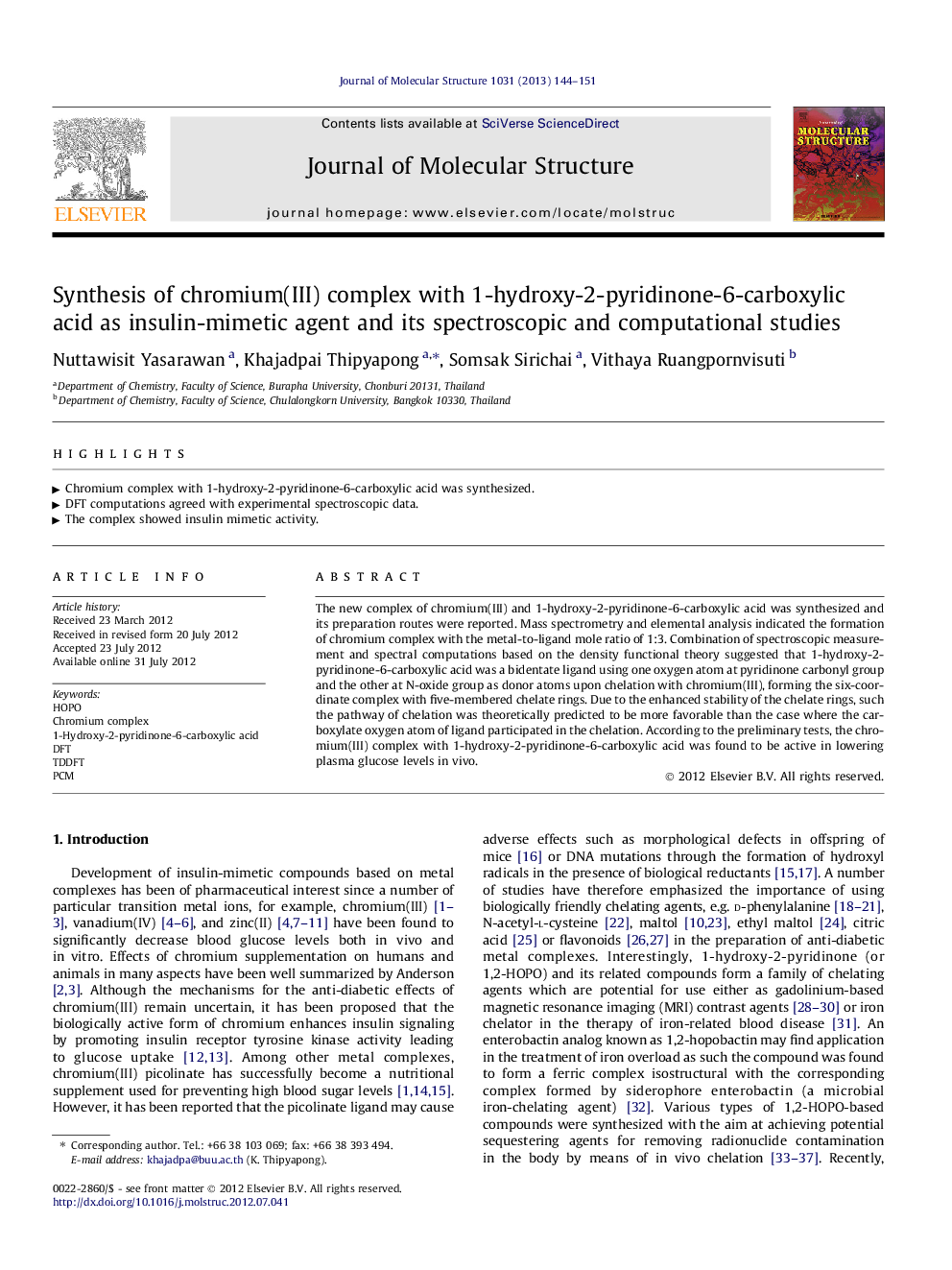| Article ID | Journal | Published Year | Pages | File Type |
|---|---|---|---|---|
| 1409459 | Journal of Molecular Structure | 2013 | 8 Pages |
The new complex of chromium(III) and 1-hydroxy-2-pyridinone-6-carboxylic acid was synthesized and its preparation routes were reported. Mass spectrometry and elemental analysis indicated the formation of chromium complex with the metal-to-ligand mole ratio of 1:3. Combination of spectroscopic measurement and spectral computations based on the density functional theory suggested that 1-hydroxy-2-pyridinone-6-carboxylic acid was a bidentate ligand using one oxygen atom at pyridinone carbonyl group and the other at N-oxide group as donor atoms upon chelation with chromium(III), forming the six-coordinate complex with five-membered chelate rings. Due to the enhanced stability of the chelate rings, such the pathway of chelation was theoretically predicted to be more favorable than the case where the carboxylate oxygen atom of ligand participated in the chelation. According to the preliminary tests, the chromium(III) complex with 1-hydroxy-2-pyridinone-6-carboxylic acid was found to be active in lowering plasma glucose levels in vivo.
► Chromium complex with 1-hydroxy-2-pyridinone-6-carboxylic acid was synthesized. ► DFT computations agreed with experimental spectroscopic data. ► The complex showed insulin mimetic activity.
